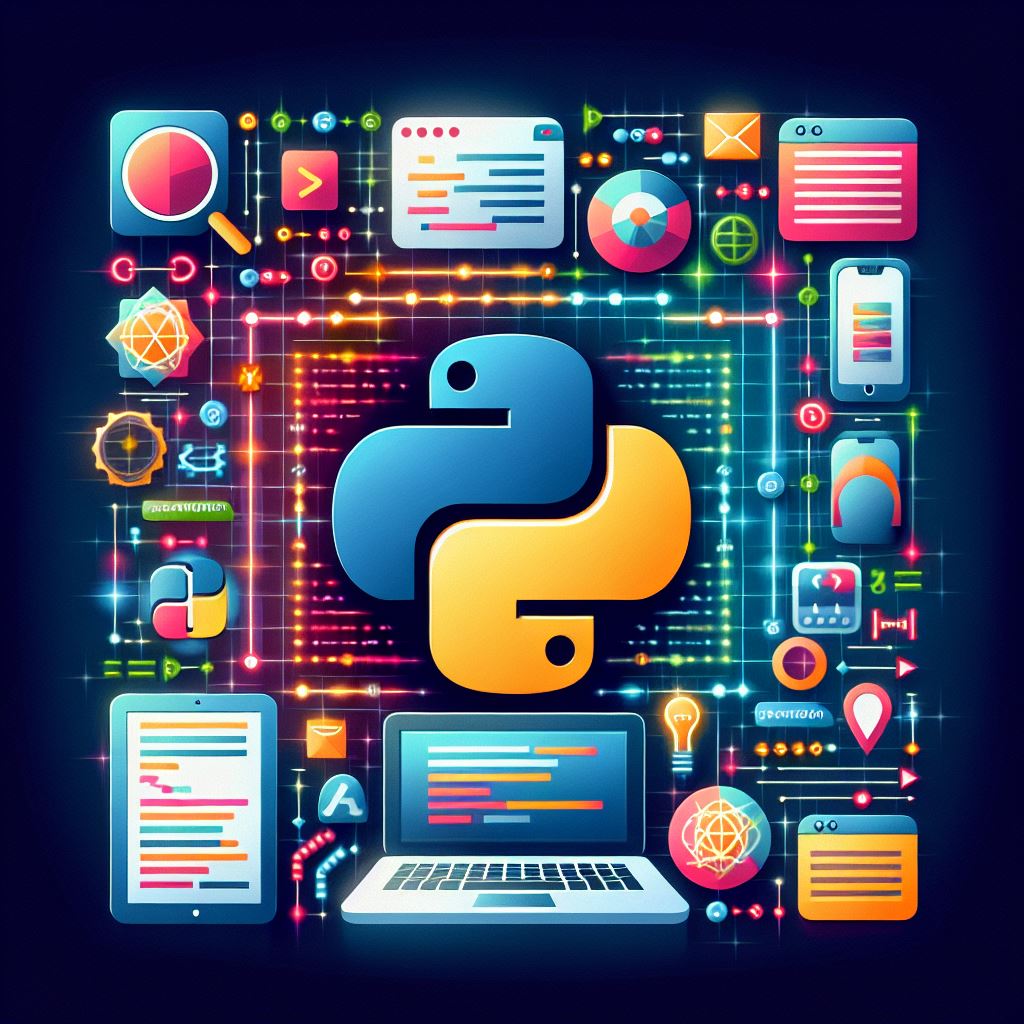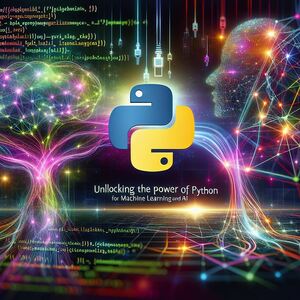Python is one of the most versatile programming languages today, used for everything from data analysis to machine learning. But did you know that Python is also a powerhouse for web development? Whether you’re looking to build dynamic websites or scrape data from the web, Python has the tools you need. In this blog, we’ll dive into how Python frameworks like Django and Flask can help you create websites, and how libraries like BeautifulSoup and Scrapy allow you to scrape valuable data.
Python for Web Development: A Powerful Solution
Web development is a key area where Python truly shines. With its clean syntax, scalability, and robust frameworks, Python provides an excellent environment for building websites and web applications. But the real power lies in the variety of frameworks available. Let’s explore two of the most popular ones: Django and Flask.
Django: A Full-Fledged Framework for Robust Applications
Django is a high-level Python web framework designed to make building complex, database-driven websites easy and efficient. Its “batteries-included” approach means that it comes with a lot of built-in features, saving developers from reinventing the wheel. Django is great for larger applications like e-commerce platforms, social media sites, and content management systems.
Here’s why Django might be the right choice for your project:
- Scalability: Django is designed to handle heavy traffic and large volumes of data, making it ideal for high-traffic websites.
- Security: It comes with built-in security features, protecting your site from common vulnerabilities such as SQL injection, cross-site scripting, and clickjacking.
- Rapid Development: Thanks to its pre-built components and automated admin interface, you can launch your project much faster than coding everything from scratch.
- Community Support: With a massive and active community, you’ll find plenty of tutorials, forums, and third-party plugins to help you along the way.
If you’re interested in diving deeper into Django, the official Django documentation offers a wealth of information for beginners and experts alike.
Flask: A Lightweight and Flexible Web Framework
While Django is a comprehensive framework for larger projects, Flask is a micro-framework that focuses on simplicity and flexibility. Flask is minimalistic, giving developers the freedom to add only the components they need. It’s a great option for smaller projects or when you need more control over your application’s structure.
Here’s why Flask could be the perfect fit for your web development needs:
- Lightweight and Minimalistic: Flask doesn’t impose project structure, allowing you to build exactly what you need without extra overhead.
- Extensibility: While Flask doesn’t include everything Django does, it provides a range of extensions to add functionality like authentication, database integration, and form handling.
- Great for APIs: Flask excels in creating simple RESTful APIs, which makes it an excellent choice for microservices and back-end solutions.
- Easy to Learn: Flask’s simplicity and clear documentation make it an ideal choice for beginners looking to learn web development in Python.
Flask is a great choice for projects where flexibility is a priority. You can explore its capabilities on the official Flask website.
Web Scraping with Python: Extracting Data from the Web
Another powerful use of Python is web scraping, the practice of extracting data from websites. Whether you need the latest news, product prices, or social media content, Python libraries like BeautifulSoup and Scrapy make it easy to scrape the web and use the data for various applications.
BeautifulSoup: A Simple and Powerful Library
BeautifulSoup is one of the most popular libraries for web scraping in Python. It parses HTML and XML documents, making it easy to extract and manipulate web data. Whether you’re a beginner or an experienced developer, BeautifulSoup’s intuitive syntax makes it accessible for everyone.
Here’s why you should consider using BeautifulSoup for your scraping needs:
- Easy to Use: With just a few lines of code, you can start extracting data from websites. BeautifulSoup allows you to parse HTML or XML and navigate through the document tree effortlessly.
- Flexible Parsing: BeautifulSoup supports different parsers, allowing you to choose the one that works best for your project.
- Integration with Requests: BeautifulSoup works seamlessly with the
requestslibrary, which makes sending HTTP requests and retrieving HTML content simple.
If you’re new to web scraping, this BeautifulSoup tutorial provides a great introduction.
Scrapy: A Full-Featured Web Scraping Framework
Another Python framework for web scraping is Scrapy, but it’s a bit more advanced than BeautifulSoup. Scrapy is a powerful tool for large-scale scraping projects, providing all the features you need to crawl websites, handle requests, and process data.
Why Scrapy is ideal for advanced web scraping:
- Efficiency: Scrapy is built for speed and efficiency, making it perfect for scraping large numbers of pages quickly.
- Built-In Features: Scrapy includes everything you need to scrape websites, from handling requests to exporting scraped data to multiple formats like JSON, CSV, and XML.
- Scalability: Scrapy is designed to scale easily, allowing you to build and deploy complex crawlers with minimal effort.
For more in-depth learning, visit the Scrapy documentation.
Conclusion: Python’s Versatility in Web Development and Scraping
Python is an incredibly versatile tool for both web development and web scraping. Whether you’re building a large-scale application with Django or creating a lightweight website with Flask, Python’s frameworks offer powerful solutions. And when it comes to extracting data from websites, BeautifulSoup and Scrapy provide flexible, efficient methods for scraping content and turning it into valuable insights.
By learning both web development and scraping, you can build a wide range of applications that integrate with live web data and offer dynamic, data-driven content to your users.










